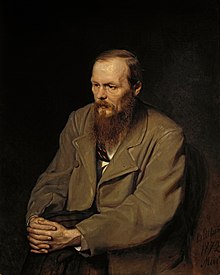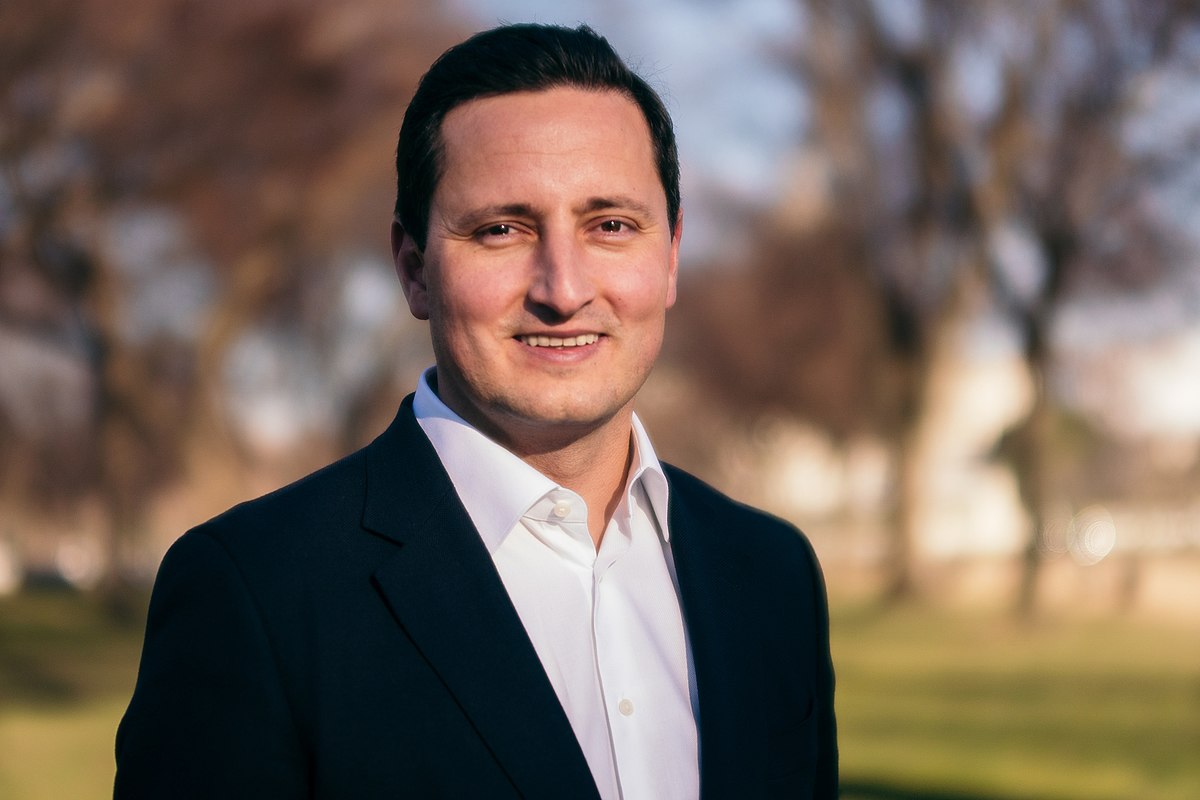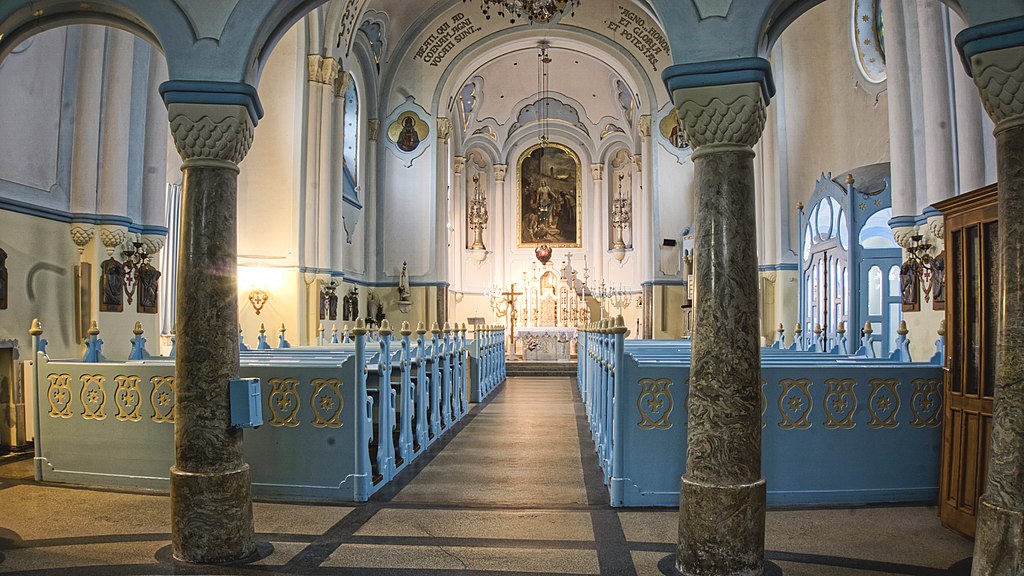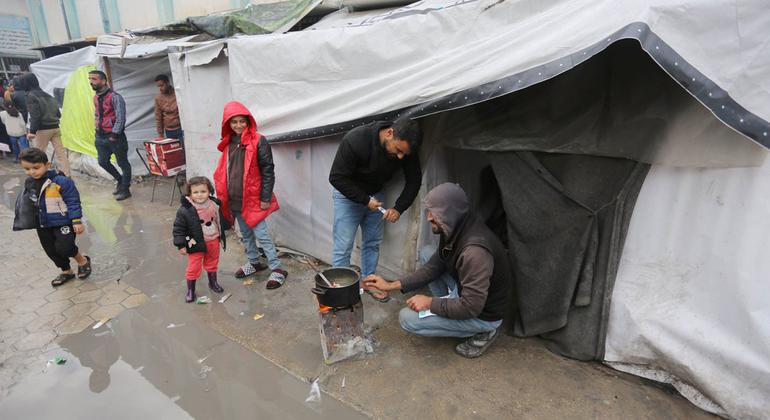By Natalya Trauberg (interview given in the fall of 2008 given to Elena Borisova and Darja Litvak), <a href=”http://expert.ru/expert/2009/19/hristianstvo_eto_neudobno/”>Expert No. 19(657), May 18, 2009</a>
To be a Christian means to give up oneself in favor of one’s neighbor. This has nothing to do with a particular denomination, but depends only on the personal choice of a person and therefore is unlikely to become a mass phenomenon.
Natalia Trauberg is an outstanding translator from English, French, Spanish, Portuguese and Italian. The man who revealed to the Russian reader the Christian thinker Gilbert Chesterton, the apologist Clive Lewis, the evangelical plays of Dorothy Sayers, the sad Graham Greene, the meek Wodehouse, the children’s Paul Gallico and Frances Burnett. In England, Trauberg was called “Madame Chesterton”. In Russia, she was the nun Joanna, a member of the board of the Bible Society and the editorial board of the magazine “Foreign Literature”, broadcast on radio “Sofia” and “Radonezh”, taught at the Biblical-Theological Institute of St. Apostle Andrew.
Natalia Leonidovna loved to talk about what Chesterton called “simply Christianity”: not about retreating into the “piety of the holy fathers,” but about Christian life and Christian feelings here and now, in those circumstances and in the place where we are placed. About Chesterton and Sayers, she once wrote: “There was nothing in them that turns one away from “religious life” – neither gravity, nor sweetness, nor intolerance. And now, when the “Pharisees’ leaven” is again gaining strength, their voice is very important, it will outweigh much.” Today these words can fully be attributed to her and her voice.
It so happened that Natalia Trauberg gave one of her last interviews to Expert magazine.
Natalia Leonidovna, against the background of the spiritual crisis experienced by humanity, many are waiting for the revival of Christianity. Moreover, it is believed that everything will begin in Russia, since it is Russian Orthodoxy that contains the fullness of Christianity throughout the world. What do you think about it?
It seems to me that talking about the coincidence of Russianness and Orthodoxy is a humiliation of the Divine and Eternal. And if we begin to argue that Russian Christianity is the most important thing in the world, then we have big problems that call us into question as Christians. As for revivals… They never happened in history. There were some relatively large appeals. Once a certain number of people thought that nothing good was coming out of the world, and followed Anthony the Great to escape into the desert, although Christ, we note, spent only forty days in the desert… In the 12th century, when the mendicant monks came, many suddenly They felt that their life was somehow at odds with the Gospel, and they began to set up separate islands, monasteries, so that it would be in accordance with the Gospel. Then they think again: something is wrong. And they decide to try not in the desert, not in a monastery, but in the world to live close to the Gospel, but fenced off from the world with vows. However, this does not greatly affect society.
In the 70s in the Soviet Union, a lot of people went to church, not to mention the 90s. What is this if not an attempt at revival?
In the 70s, the intelligentsia, so to speak, came to the church. And when she “converted,” one could notice that not only did she not show Christian qualities, but, as it turned out, she also stopped showing intellectual qualities.
What does it mean – intelligent?
Which remotely reproduce something Christian: to be delicate, tolerant, not to grab yourself, not to tear off another’s head, and so on… What is a worldly way of life? This is “I want”, “desire”, what in the Gospel is called “lust”, “concupiscence”. And a worldly person simply lives as he wants. So here it is. In the early 70s, a number of people who had read Berdyaev or Averintsev began to go to church. But what do you think? They behave as before, as they want: pushing the crowd apart, pushing everyone aside. They almost tear Averintsev to pieces at his first lecture, although in this lecture he talks about simple gospel things: meekness and patience. And they, pushing each other away: “Me! I want a piece of Averintsev!” Of course, you can realize all this and repent. But how many people have you seen who came to repent not only for drinking or committing adultery? To repent of adultery is welcome, this is the only sin that they remember and realized, which, however, does not prevent them from leaving their wife later… And that a much greater sin is to be proud, important, intolerant and dry with people, to scare away, to be rude…
It seems that the Gospel also says very strictly about adultery of spouses?
It’s been said. But not the entire Gospel is devoted to this. There is one amazing conversation when the apostles cannot accept the words of Christ that two should become one flesh. They ask: how is this possible? Is this impossible for humans? And the Savior reveals this secret to them, says that real marriage is an absolute union, and adds very mercifully: “Whoever can accommodate, let him accommodate.” That is, whoever can understand will understand. So they turned everything upside down and even made a law in Catholic countries that you cannot get divorced. But try to make a law that you can’t yell. But Christ speaks about this much earlier: “He who is angry with his brother in vain is subject to judgment.”
What if it’s not in vain, but to the point?
I am not a good biblical scholar, but I am sure that the word “in vain” here is an interpolation. Christ did not pronounce it. It generally removes the whole problem, because anyone who gets angry and yells is sure that they are not doing it in vain. But it is said that if “your brother sins against you, reprove him between you and him alone.” Alone. Politely and carefully, as you would like to be exposed. And if the person did not hear, did not want to hear, “…then take one or two brothers” and talk to him again. And finally, if he did not listen to them, then he will be like a “pagan and a publican” to you.
That is, as an enemy?
No. This means: let him be like a person who does not understand this type of conversation. And then you step aside and give space to God. This phrase – “make room for God” – is repeated in Scripture with enviable frequency. But how many people have you seen who heard these words? How many people have we seen who came to church and realized: “I am empty, I have nothing but stupidity, boasting, desires and the desire to assert myself… Lord, how do you tolerate this? Help me improve!” After all, the essence of Christianity is that it turns the whole person upside down. There is a word that comes from Greek “metanoia” – a change of thinking. When everything that is considered important in the world – luck, talent, wealth, one’s good qualities – ceases to be valuable. Any psychologist will tell you: believe in yourself. And in church you are nobody. No one, but very beloved. There a person, like a prodigal son, turns to his father – to God. He comes to him to receive forgiveness and some kind of presence, at least in his father’s yard. His father, poor in spirit, bows down to him, cries and lets him go forward.
So what is the meaning of the expression “poor in spirit”?
Well, yes. Everyone thinks: how could this be? But no matter how you interpret it, it all comes down to the fact that they have nothing. A worldly person always has something: my talent, my kindness, my courage. But these have nothing: they depend on God for everything. They become like children. But not because children are beautiful, pure creatures, as some psychologists claim, but because the child is completely helpless. He does not exist without his father, he will not be able to eat, he will not learn to speak. And the poor in spirit are like that. Coming to Christianity means that a certain number of people will live a life that is impossible from a worldly point of view. Of course, it will also happen that a person will continue to do what is typical for us, pathetic, unhappy and funny. He can get drunk like a gray horse. You may fall in love at the wrong time. In general, everything human in him will remain. But he will have to count his actions and thoughts from Christ. And if a person accepted it, opened not only his heart, but also his mind, then conversion to Christianity occurred.
Partisanship instead of love
Most Christians know about the existence of different faiths, some are interested in canonical differences. Does this matter to the daily life of a Christian?
I think no. Otherwise, it turns out that when we came to church, we simply came to a new institution. Yes, it is beautiful, yes, there is wonderful singing there. But it is very dangerous when they say: they say, I love such and such a church, because they sing well there… It would be better if they kept quiet, honestly, because Christ never sang anywhere. When people come to church, they find themselves in an institution where everything is the other way around.
This is ideal. And in fact?
In fact, this is very common today: ours is yours. Who is cooler – Catholics or Orthodox? Or maybe schismatics. Followers of Father Alexander Men or Father Georgy Kochetkov. Everything is divided into tiny batches. For some, Russia is an icon of Christ, for others, on the contrary, it is not an icon. It’s also common among many of us, isn’t it? I took communion, went out into the street, and I despise everyone who hasn’t joined the church. But we went out to those to whom the Savior sent us. He called us not slaves, but friends. And if for the sake of ideas, convictions and interest we begin to spread rot on those who do not live according to our “law”, then we are not Christians, really. Or there is an article by Semyon Frank, where he talks about the beauty of Orthodox churches: yes, we saw a world of wondrous beauty and loved it very much, and realized that this is the most important thing in the world, but there are people around us who do not understand this. And there is a danger that we will begin to fight them. And we, unfortunately, are moving in this direction. For example, the story of the miracle of the Holy Fire. To think that we, Orthodox Christians, are the best, because only for us, on our Easter, the Holy Fire appears, and for everyone else – fuck, this is amazing! It turns out that people born, say, in France, where there is Catholicism, are rejected from God. From God, who says that a Christian must, like the sun to man, shine on the right and the wrong! What does all this have to do with the Good News? And what is this if not party games?
Essentially, is this hypocrisy?
Yes. But if Christ did not forgive anyone, then only the “self-righteous,” that is, the Pharisees. You cannot build a life according to the Gospel using the law: it doesn’t fit, this is not Euclidean geometry. And we also have delight in the power of God. But why? There are plenty of such religions. Any pagan religion admires the power of God, magic. Alexander Schmemann writes, yes, maybe they wrote before, that Christianity is not a religion, but a personal connection with Christ. But what’s going on? Here are young guys, smiling, talking, going to communion… And behind them are old women with chopsticks, after surgery. And it wouldn’t even occur to the guys to miss the grandmothers. And this is right after the liturgy, where once again everything was said! I didn’t go to take communion several times out of anger at it all. And then on radio “Radonezh”, which is usually on Sunday, she told listeners: “Guys, today I didn’t take communion because of you.” Because you look, and already in your soul something is happening that, not only to take communion, but also to be ashamed to look at church. Communion is not a magical act. This is the Last Supper, and if you came to celebrate with Him the now eternally celebrated evening before His death, then try to hear at least one thing that Christ added to the Old Testament and which turned everything upside down: “…love one another, as I have loved you… »
The commonly quoted phrase is “Don’t do what you don’t want to do.”
Yes, love for every good person means this golden rule. Quite reasonable: don’t do this and you will be saved. The Old Testament matrix, which was later taken over by Islam. And Christian love is a heartbreaking pity. You may not like the person at all. He may be absolutely disgusting to you. But you understand that, besides God, he, like you, has no protection. How often do we see such pity even in our church environment? Unfortunately, even this environment in our country is still most often unpleasant. Even the word “love” itself is already compromised in it. Threatening the girls with hellfire for having abortions, the priest says: “And the main thing is love…” When you hear this, even with complete non-resistance, there is a desire to take a good club and…
Isn’t abortion evil?
Evil. But they are deeply private things. And if the main Christian activity is the fight against abortion, then there is some charm in this – in the original understanding of the word. Suppose some girl wanted love, like any normal person, and found herself in a situation in which it was difficult to give birth. And the priest tells her that if she dies during the abortion, she will immediately go to hell. And she stamps her feet and shouts: “I won’t go to any of your churches!” And he’s doing the right thing by stomping. Well, come on, Christian, go ban abortions and scare the hell out of the girls who have heard that there is nothing higher than falling in love and that you can’t refuse anyone because it’s old-fashioned, or un-Christian, or whatever. It’s terrible, but Catholics have such habits…
What about the Orthodox?
We have more on the other side: they ask whether it is possible to keep dogs in a house where icons hang, and one of the main topics is fasting. Some strange pagan things. I remember when I was just starting to broadcast on a small church radio channel, they asked me a question: “Please tell me, is it a big sin if I eat before the star on Christmas Eve?” I almost burst into tears then on the air and talked for two hours about what we are talking about now.
Deny yourself
So what can we do here?
But there’s nothing so scary about it. When we didn’t have the concept of sin for so long, and then we began to accept anything as sin except self-love, “the ability to live,” self-will, confidence in our righteousness and perseverance, we need to start all over again. Many had to start over. And whoever has ears to hear, let him hear. Here, for example, is Blessed Augustine, a great saint. He was smart, he was famous, he had a wonderful career, if we measure it in our terms. But life became difficult for him, which is very typical.
What does it mean: it became difficult for Augustine to live?
This is when you begin to realize that something is wrong. Nowadays people relieve this feeling by going to a beautiful church and listening to beautiful singing. True, then they most often begin to hate it all or become hypocrites, never having heard what Christ said. But this was not the case with Augustine. A friend came to him and said: “Look, Augustine, even though we are scientists, we live like two fools. We are looking for wisdom, and everything is not there.” Augustine became very excited and ran out into the garden. And I heard from somewhere: “Take it and read it!” It seems that this boy was shouting to someone on the street. And Augustine heard that it was for him. He ran into the room and opened the Gospel. And I came across the message of Paul, on the words: “Put on the Lord Jesus Christ and do not turn the cares of the flesh into lusts.” Simple phrases: deny yourself and take up the cross, and don’t turn concerns about yourself into your idiotic desires, and understand that the most important worldly law in the world – to do what my head or, I don’t know what else, wants – is not for a Christian doesn’t matter. These words completely changed Augustine.
Everything seems to be simple. But why does a person so rarely manage to deny himself?
Christianity is actually very uncomfortable. Well, let’s say they let someone be the boss, and he must think that it is very difficult to behave like a Christian in such a situation. How much wisdom he needs! How much kindness is needed! He must think of everyone as of himself, and ideally, as Christ does of people. He must put himself in the place of everyone who walks under him and take care of him. Or, I remember, they asked why, when I had such an opportunity, I did not emigrate. I answered: “Because it would kill my parents. They would not dare to leave and would remain here, old, sick and lonely.” And we have a similar choice at every step. For example, someone from above flooded your apartment, and he doesn’t have the money to compensate you for the repairs… You can sue him or start arguing with him and thereby poison his life. Or you can leave everything as is, and then, if the opportunity arises, do the repairs yourself. You can also give up your turn… Be quiet, not important… Don’t be offended… Very simple things. And the miracle of rebirth will happen gradually. God honored man with freedom, and only we ourselves, of our own free will, can break. And then Christ will do everything. We just need, as Lewis wrote, not to be afraid to open the armor in which we are shackled and let Him into our hearts. This attempt alone completely changes life and gives it value, meaning and joy. And when the Apostle Paul said “Rejoice always!”, he meant just such joy – at the highest heights of the spirit.
He also said “weep with those who weep”…
The thing is that only those who know how to cry can rejoice. Shares their sorrows and sorrows with those who cry and does not run away from suffering. Christ says that those who mourn are blessed. Blessed means happy and have all the fullness of life. And His promises are not heavenly, but earthly. Yes, the suffering is terrible. However, when people suffer, Christ offers: “Come to Me, all you who suffer and are heavy laden, I will give you rest.” But with one condition: take My yoke upon you and you will find rest for your souls. And the person really finds peace. Moreover, there is deep peace, and it’s not at all like he will walk around like he’s frozen: he just begins to live not in vanity, not in disarray. And then the state of the Kingdom of God comes here and now. And maybe, having learned it, we can help others too. And here is a very important thing. Christianity is not a means of salvation. A Christian is not the one being saved, but the one who saves.
That is, he should preach and help his neighbor?
Not only. Most importantly, he introduces a tiny element of a different type of life into the world. My godmother, my nanny, introduced such an element. And I will never be able to forget that I saw such a person and knew him. She was very close to the Gospel. A penniless servant, she lived as a perfect Christian. She never did harm to anyone, never said an offensive word. I remember only once… I was still little, my parents went somewhere, and I wrote letters to them every day, as we agreed. And one woman who was visiting us looks at this and says: “Well, how to deal with a child’s sense of duty? Never, baby, do anything you don’t want to do. And you will be a happy person.” And then my nanny turned pale and said: “Please forgive us. You have your own home, we have ours.” So once in my entire life I heard a harsh word from her.
Were your family, parents, different?
My grandmother, Marya Petrovna, also never raised her voice. She left the school where she worked as a teacher because there she had to say anti-religious things. While grandfather was alive, she walked around him like a real lady: in a hat and a formal coat. And then she moved in with us. And it was not easy for her, a very tough person, apparently by type, with us, careless people. Here is my mother, her daughter, here is her unmarried husband, a film director and a bohemian in general… My grandmother never said that he was a Jew, because a normal Christian cannot be an anti-Semite. And how much she suffered with me! I, a seventeen-year-old cretin who didn’t go to school, went to university and there I almost went crazy with delight, success, falling in love… And if you remember all the stupid things I did! I fell in love and stole my grandfather’s wedding ring, believing that the great feelings I felt gave me the right to stuff this ring with cotton wool, put it on my finger and walk around with it. The nanny would probably have said more softly, but the grandmother would have said harshly: “Don’t do this. Nonsense.”
And is this tough?
For her – very much. And my mother, in order for me to dress more fashionably than I thought possible after my grandmother’s and nanny’s upbringing, could bang my head against the wall to prove something to me. But she, tormented by the bohemian life, also alien to her due to her upbringing, which she, however, was forced to lead, cannot be judged. And she always believed that she had to dissuade me from faith, since I was ruining myself. Even Messinga invited me to bring me to my senses. No, she didn’t fight Christianity, she just understood that it would be hard for her daughter. And not because we lived in the Soviet Union, where they declared that there was no God. In any century, parents try to dissuade their children from Christianity.
Even in Christian families?
Well, for example, Anthony the Great, St. Theodosius, Catherine of Siena, Francis of Assisi… All four stories have Christian parents. And all about the fact that all children are people like people, and my child is a cretin. Theodosius does not want to dress as smartly as his class should, and devotes a lot of energy and time to good deeds. Catherine takes care of the sick and poor every day, sleeping for an hour a day, instead of going out with her friends and taking care of the house. Francis refuses a cheerful life and his father’s inheritance… Such things have always been considered abnormal. Well, now, when the concepts of “success”, “career”, “luck” have practically become a measure of happiness, even more so. The pull of the world is very strong. This almost never happens: “stand on your head,” according to Chesterton, and live like that.
What is the point in all this if only a few become Christians?
But nothing massive was envisaged. It was not by chance that Christ spoke such words: “leaven”, “salt”. Such tiny measurements. But they change everything, they change your whole life. Keep the peace. They hold any family, even one where they have reached absolute disgrace: somewhere, someone, with some kind of prayers, with some kind of feat. There, a whole world of this strange at first glance opens up: when it’s easy, do it, when it’s difficult, talk, when it’s impossible, pray. And it works.
And also humility, with the help of which only one can overcome the evil that triumphs around.
Illustration: Iconographic type “Healing a demoniac sleepwalker”
Source: http://trauberg.com/chats/hristianstvo-e-to-ochen-neudobno/















